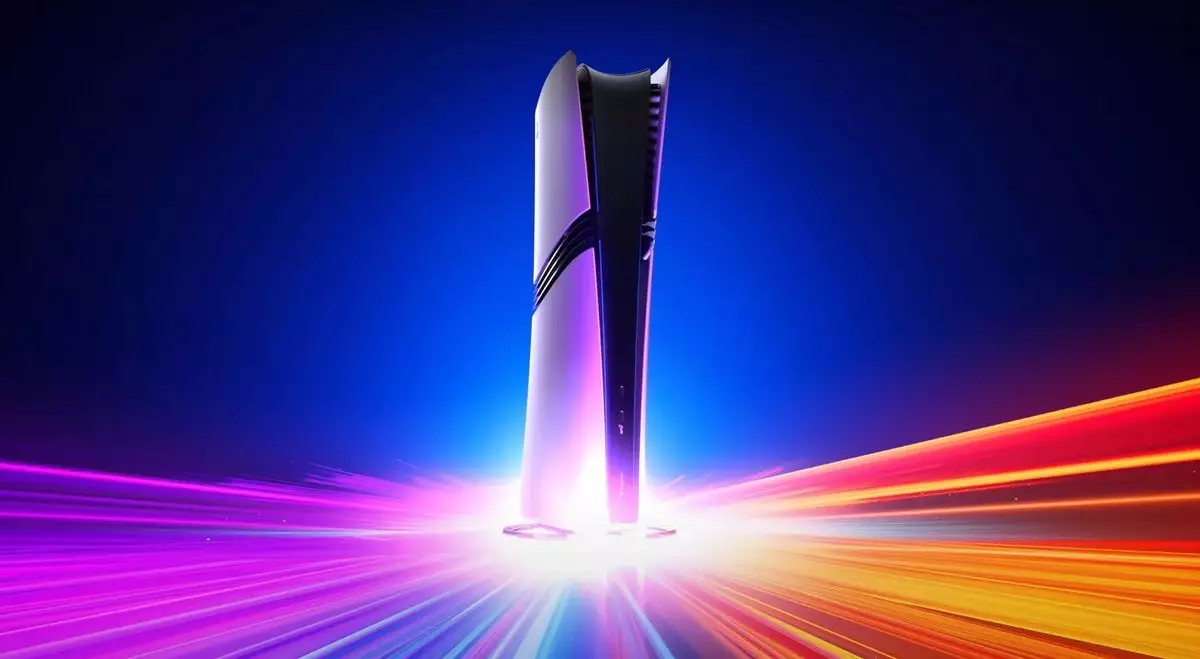The gaming landscape is buzzing with the much-anticipated PlayStation 5 Pro, which, as it turns out, blends nostalgic technology with hints of cutting-edge advancements. At the core of the PlayStation 5 Pro is a GPU that primarily resonates with older architecture; however, it teases the ray-tracing capabilities that will be pivotal in the gaming experience of tomorrow. This leads us into a deeper understanding of the PlayStation 5 Pro’s design philosophy, particularly how it integrates emerging technological advancements while ensuring seamless compatibility.
Sony’s lead console architect, Mark Cerny, has shed light on the GPU’s composition, revealing that it is fundamentally built on the RDNA 2 architecture, the same foundation that powers the original PlayStation 5. While this may seem like a regression, it embodies a strategic choice aimed at compatibility. By incorporating the familiar RDNA 2 technology for shaders, Cerny asserts that developers will be able to create games that function seamlessly across both the PS5 and PS5 Pro. This single code path ensures that developers are not burdened with the complexity of creating different versions of their games for the two consoles.
However, Cerny provides an interesting caveat: the GPU in the PS5 Pro isn’t merely an RDNA 2 chipset. Rather, it is an intriguing hybrid that incorporates elements from the RDNA 3 architecture, particularly in the geometry pipeline. This shift, although subtle, is designed to enhance performance without overwhelming developers. Cerny strikingly emphasizes that the PS5 Pro’s architecture skews towards RDNA 2, with accelerated geometry aspects that promise improved performance while maintaining backward compatibility—a move that should be commended.
The most compelling feature of the PS5 Pro’s GPU involves its enhanced ray-tracing capabilities. While the specifics about this advanced feature are cloaked in anticipation, Cerny’s comments signal a significant departure from traditional GPU designs. He hints at a “future RDNA” generation which is expected to debut with the PS5 Pro, suggesting that ray tracing technology in this console may not be merely evolutionary but rather foundational for AMD’s forthcoming products.
One of the key advancements highlighted by Cerny is the doubling of Bounding Volume Hierarchy (BVH) performance. This enhancement is crucial for improving ray-tracing tasks, as it assists the GPU in managing light behavior more effectively and efficiently. The introduction of a new stack management engine is anticipated to facilitate complex reflections—an aspect that is becoming increasingly vital in high-fidelity gaming environments. Thus, players can anticipate graphical improvements that resonate with the immersive quality that modern games strive to achieve.
Performance metrics provided by Cerny suggest that users might experience ray tracing calculations at speeds that verging on double or triple those of the original PS5. This boosts performance substantially, with estimates hinting at a 45% overall improvement owing to the larger, more complex GPU architecture in the PS5 Pro. Nevertheless, it is critical to assert that the true essence of this performance leap emanates not merely from hardware size but from its architectural underpinnings.
As we dive further into performance expectations, Cerny optimistically claims that ray tracing on the PS5 Pro might be eking out enhancements that are 100% to 200% faster compared to its predecessor. This data paints a hopeful picture for ray-tracing enthusiasts, particularly in light of current competition in the market, where AMD has been trailing behind rivals like Nvidia in ray-tracing performance.
The competitive dichotomy among GPU manufacturers presents an intriguing landscape as the PS5 Pro looks to capitalize on its architectural advancements. While Cerny expresses confidence in AMD’s roadmap, the looming release of Nvidia’s Blackwell architecture, along with its own RTX 50 series, means that AMD still faces considerable headwinds in the gaming GPU market.
Moreover, a consistent improvement in ray-tracing capabilities on RDNA 4 GPUs, as hinted by the PS5 Pro’s performance, could position AMD to close the performance gap noticeably. This is vital, particularly given how demanding modern titles like Cyberpunk 2077 are when harnessing ray tracing; the balance between performance and graphical fidelity is a tightrope that AMD aim to refine.
The PlayStation 5 Pro offers a thoughtful and strategic enhancement to its predecessor, merging the reliable RDNA 2 architecture with intriguing elements from RDNA 3. As anticipation builds around its ray-tracing capabilities, the real test lies ahead: can AMD’s next-generation GPUs deliver the promise of performance while revitalizing its standing in an increasingly competitive landscape? The PS5 Pro may well act as a precursor, holding the keys to AMD’s future in high-fidelity gaming.

